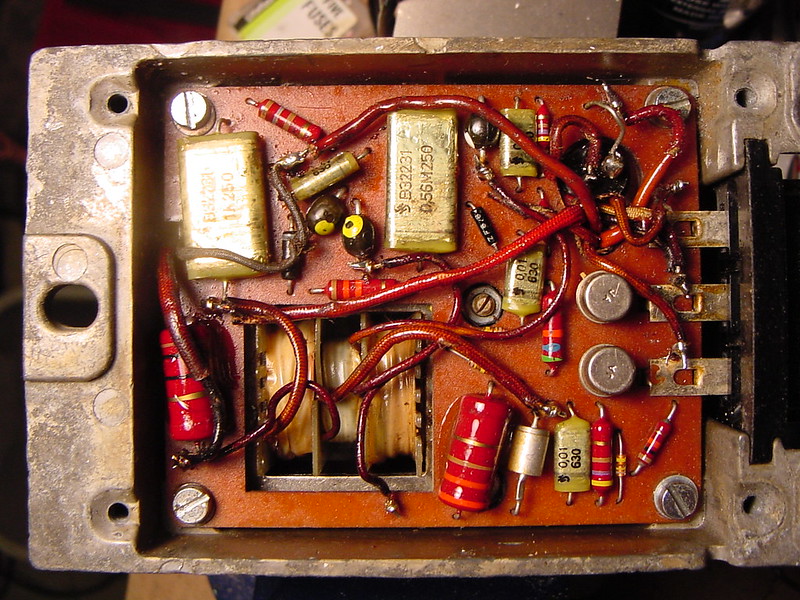How Do You Bypass a CDI Box?

A capacitor discharge ignition box (CDI) box is used in motorcycles, turbine-powered aircraft, outboard motors, and some cars. You can temporarily bypass a CDI box for troubleshooting purposes. The box amplifies the small signal generated from the spinning magnet located in front of the pickup coil in the stator, just before top dead center (TDC), when your fuel-air mixture is ignited. The box can’t generate continuous sparks. Thus, it’s unable to store enough voltage to keep the engine running. Follow the following directions to effectively bypass your CDI box by carrying out an ignition coil resistance test (“bench test”).
Clear Your Bench
Because it’s able to ignite the air and fuel mixture powering your engine, you need to ensure your bench is free of any flammable liquids like gasoline. You need to test the battery to ensure that it’s fully charged else you’ll need to replace it.
Remove the CDI Box
The box is black and features two plugs and a bullet connector. After locating it, you’ll need to remove it to access its electrical terminals easily. Your service manual comes in handy at this point as you’re supposed to follow precise instructions to remove the CDI box. The automotive should be switched off and allowed to cool. Use an ohmmeter to measure the electrical resistance of the CDI box in a quantifiable way.
Check the Resistance Specifications
Different vehicles have specified electrical resistance within the coil. If the coil’s correct resistance levels fail to meet these specifications, you’ll know that your coil is damaged. The resistance specifications unique to your vehicle are often found in the service manual. After grounding the wire originating from the stator to the motor, ensure that the main wires from the CDI box are disconnected.
Measure the Primary Coil Resistance
The distributor features three electrical contacts that can either be external or internal. Using your ohmmeter, touch the outer electrical contacts and record the resistance reading. This is referred to as the coil’s primary winding resistance.
Measure the Secondary Coil Resistance
Touch one of the outer contact leads and central, inner contact of the ignition coil. This is where the main wire connects to the distributor. Record the reading. This is termed as the secondary winding resistance of the ignition coil.
Compare the Readings
The ignition coils in the CDI box are delicate components of an automotive electronic ignition system. If either the primary and secondary windings are different from the automotive specifications, you’ll want to replace your CDI box, as your current one might be damaged or malfunctioning. An engine spark characterizes a faulty CDI box, whereas a well-functioning box doesn’t allow the engine to spark.
Merits of a CDI Box
The main advantage of a CDI box is its capacitor’s ability to take the shortest time possible to be charged up. Shunt resistance doesn’t affect the CDI box due to fast electric voltage rising. Compared to inductive systems, the CDI box system has a shorter transient response and spark duration.
Drawbacks of a CID Box
The CDI system produces huge electromagnetic noises that don’t sit well with automobile manufacturers. Its short spark duration isn’t ideal for lighting relatively lean mixtures. This problem is solved by the release of numerous sparks at low engine speeds.





